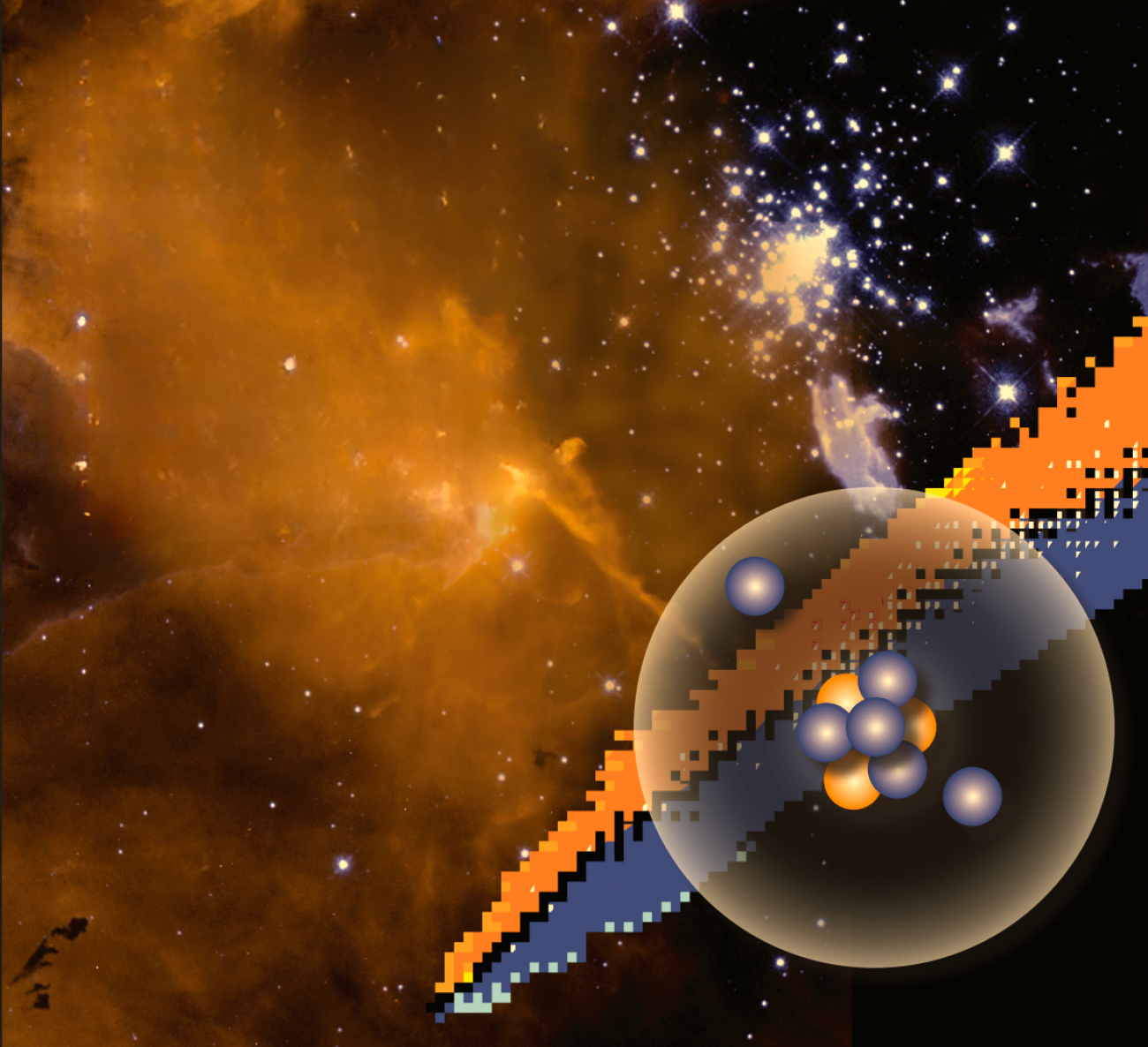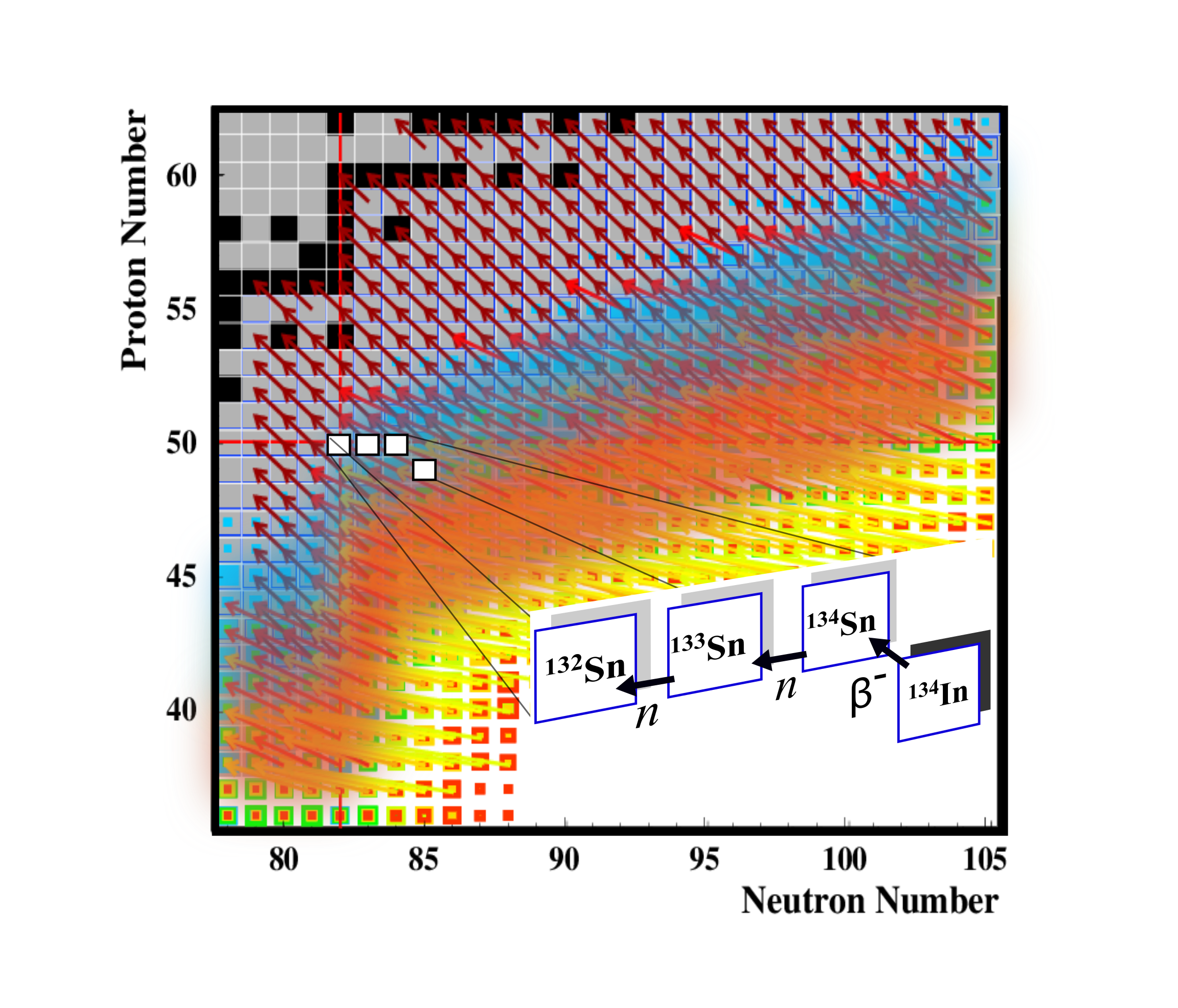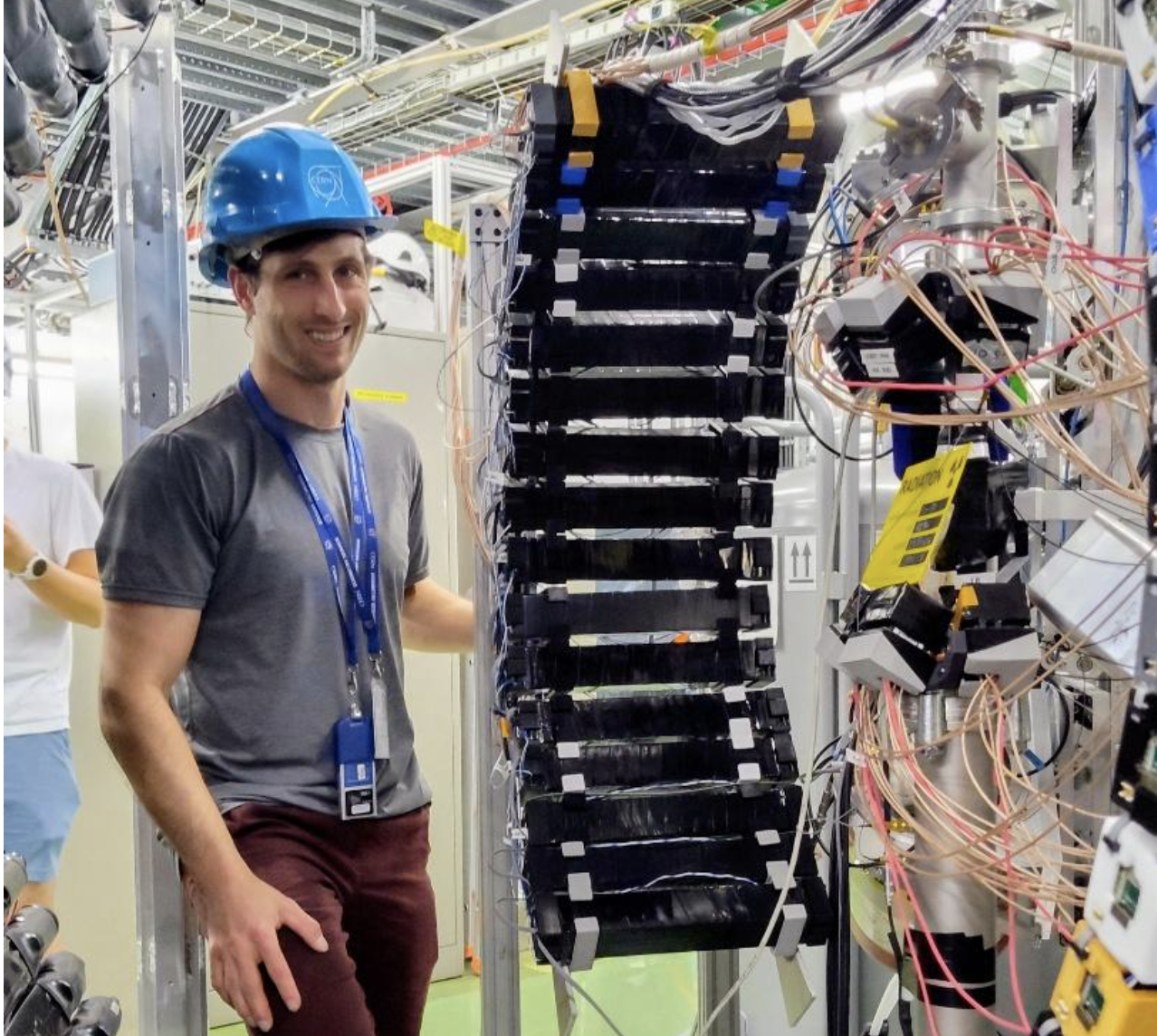Decoding r-Process Nucleosynthesis: Precision Studies of Exotic Indium Isotopes at ISOLDE

How are the chemical elements synthesised in stellar environments? Which processes lead to their creation? What impact does nuclear physics have on their production? Describing the origins of the chemical elements and their observed abundances remains one of the most significant challenges in modern physics [1]. In particular, modelling the production of elements heavier than iron has proven difficult, with the heaviest elements such as gold, lead, and uranium thought to be produced in the exotic “rapid neutron capture” or “r-process” [2]. This process is currently poorly understood, with the first observational evidence for it having only recently been reported [3], following the GW170817 neutron-star merger [4]. It is now thought that these cataclysmic events are one of the primary sources of r-process nucleosynthesis, with each event producing masses of gold roughly equal to that of our own planet.

Figure 1 – A zoomed-in view of the Segre chart showing isotopes formed in the r-process (red, yellow and green squares). The isotopes studied in ISOLDE are indicated by the white squares. Arrows indicate the decay paths of the different isotopes.
The r-process is typically modelled using large-scale network calculations that rely on nuclear physics inputs, such as masses, half-lives, and neutron-capture cross-sections, among others [2]. However, the r-process follows a path through regions of nuclei where the dominant decay mode is beta-delayed neutron emission, whereby the beta decay of a parent nucleus is followed by the ejection of one or more neutrons. Currently, most of these nuclei are impossible to synthesise and study in the laboratory due to their extreme neutron-to-proton ratios. As such, r-process network calculations take their input from nuclear model predictions.
These models typically treat beta-delayed neutron emission as a statistical process using the Hauser-Feshbach formalism [5], in which the beta decay populates a highly-excited “compound” nucleus, where a very high density of states “erases” the original nuclear configuration. In this approach, the beta-decay probability depends solely on the excitation energy, spin, and parity of the states that are populated. However, new experimental results are challenging the current assumption of a structureless compound nucleus [5,6].
Recently, a campaign of experiments led by physicists from the University of Tennessee, Knoxville, has been conducted at CERN’s ISOLDE facility to further test these models and study the beta-delayed neutron emission in detail [7-9]. These experiments have been made possible by a combination of the uniquely pure and intense beams provided by CERN’s ISOLDE facility, coupled with significant developments in neutron-detection technologies [10]. These new neutron detection methods were introduced to and combined with the existing detection systems of the ISOLDE Decay Station (IDS) to perform detailed neutron spectroscopy measurements [11]. Together, they have enabled precision studies of the extremely exotic and neutron-rich isotopes 134,135In (Z=49, N=85,86) in experiments conducted in May 2024 and 2025.
Figure 2 – The ISOLDE Decay station setup used during the experiments, equipped with arrays of neutron detectors.
With half-lives of just 121(5) and 97(5) ms, respectively, nuclei of 134,135In were produced in fission events induced by impinging the 1.4-GeV proton beam from CERN’s PS booster on a 50 g/cm2 uranium carbide target. Ion beams of 134,135In were then extracted and purified using a combination of ISOLDE’s element-selective laser ionisation and mass separators, then delivered to IDS. The results from the 134In study have recently been submitted for publication [12] and include the first energy measurements of multi-neutron emission, which has only been reported once before in the decay of 11Li [13]. The 134In decay populates highly-excited, neutron-unbound states in 134Sn, which cool off via the emission of neutrons or gamma rays. In the process, the isotopes of 133Sn and 132Sn are produced. In the two-neutron emission data, the experimenters located a very special excited state in 133Sn, which is attributed to a single neutron occupying a high-spin single-particle state. While this is an intensely populated state in the neutron emission from 134Sn, its population is still much smaller than the predictions of the structureless compound nucleus model.
Meanwhile, though the IDS data 135In were collected only very recently, the results from the online analysis look extremely promising for this known beta-delayed multi-neutron emitter [14]. This experiment achieved the near impossible task of suppressing the background from a strongly produced isomer of 135Cs, which came as a surface-ionised beam contaminant. Even though this contamination arrived with a rate four orders of magnitude higher than the 135In of interest, the experimentalists were able to filter it out of the data using the combination of different detection systems available at IDS.
The new data on 134,135In contribute to a growing understanding that nuclear structure plays a significantly more important role in the decays of exotic nuclides than previously assumed. This suggests that a re-evaluation of how we model the beta-decay process in nuclei is required. In turn, this has significant implications for models in other areas of science, from the physics that takes place within our nuclear reactors here on Earth to the astrophysical nucleosynthesis processes that produce the chemical elements from which we’re all made. Future experiments will continue to push the boundaries of studies of r-process isotopes using the Isolde Decay Station, while also employing methods that utilise nuclear spin polarised beams to explore the true nature of beta-delayed neutron emission in depth.

Figure 3 – PhD student Peter Dyszel, the lead author of the 134In study [12], assembling the arrays of neutron detectors used during the experiments.
Further Reading
- NuPECC, “Long Range Plan 2024 for European Nuclear Physics”, arXiv:2503.15575 (2024); US Department of Energy, “A new era of discovery: the 2023 long range plan for nuclear science” (2023); UK’s STFC, “Science challenges in frontier physics” (2019).
- M. Arnould, S. Goriely, and K. Takahashi, Phys. Rep. 450, 97–213 (2007)
- D. Siegel, EPJA 55, 203 (2019); R. Margutti and R. Chornock, Ann. Rev. Astro. 59, 155–202 (2021)
- B. P. Abbott et al., Phys. Rev. Lett. 119, 161101 (2017)
- T. Kawano, P. Möller and W. B. Wilson, Phys. Rev. C 78, 054601 (2008)
- R. Yokoyama et al., Phys. Rev. C 108, 064307 (2023)
- Z. Y. Xu et al., Phys. Rev. Lett. 131, 022501 (2023)
- J. Heideman et al., Phys. Rev. C 108, 024311 (2023)
- Z. Y. Xu et al., Phys. Rev. Lett. 133, 042501 (2024)
- J. Heideman et al., Nucl. Instr. Meth. A 946, 162528 (2019)
- https://isolde-ids.web.cern.ch
- P. Dyszel et al., in submission (2025).
- F. Delaunay et al., Il Nuovo Cimento, 42 C:98 (2019)
- V. H. Phong et al., Phys. Rev. Lett. 129, 172701 (2022)
